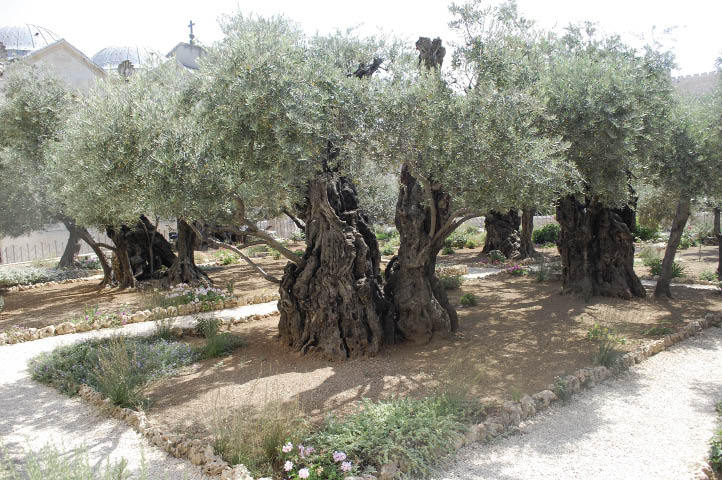Fashion may be Folly’s child, but that never stopped gardeners, when the urge was on them, from planting something à la mode.
Fashion may be Folly’s child, but that never stopped gardeners, when the urge was on them, from planting something à la mode. That must be why olive trees (Olea europea), natives of the rocky dry soils of the eastern Mediterranean, are now so widely planted in British gardens. Prince Charles has them at Highgrove and they can be seen each year at Chelsea Flower Show so, hey, we all have to grow them, don’t we?
If you want them to survive unscathed our new-style, old-style cold winters — especially if you live in an exposed rural location — you will have to wrap them up like mummies in horticultural fleece or bring them inside under glass. Young plants cannot hack anything below –10º C, so you can’t even think about growing them if you live in Sutherland or Shropshire, although mature trees are a little hardier. Olives grown in pots, which are kept almost dry in the winter, will survive much better than those regularly watered. Except in the sunniest parts of the south, you will be lucky to achieve ripe olives; if you are set on trying, it is best to grow a selected cultivar, like ‘Frantoio’. Olive trees planted in the ground, rather than in pots, need a light, free-draining, limey soil in absolutely full sun.
Despite these potential difficulties, I am almost as beguiled as everyone else. Although steadfastly immune to the charm of tender palms, lantanas, cannas or tree ferns, which have become so popular in recent years, I do love an olive, for its ever-grey, narrowly oblong leaves, its biddable, clippable habit, and its scented, small, white flowers in summer. It has a seemly reticence and stout uprightness utterly lacking in a hardy banana, say. An olive tree seems to imply that, since it can live for a thousand years, it doesn’t need to show off like those fly-by-night subtropical herbs.
And olive trees can be very long lived. It is hard to say even approximately, since they cannot easily be dated by counting tree rings, but there is one still growing in Crete, apparently, that is more than 2,000 years old. Because they can regenerate so well from their extensive roots, olive trees are remarkably transplantable, which is why you see ones on sale that are centuries old, having been dug up and exported from some Mediterranean grove.
I have thought a lot about olive trees since a recent trip to Jerusalem, when we visited the Garden of Gethsemane (see picture), just the other side of the narrow Kidron Valley from the walls of the Old City. Although the location of many significant Christian, Jewish and Muslim events is fiercely disputed, there does seem to be a degree of agreement over the site of the Garden of Gethsemane (Gethsemane means ‘olive press’), the scene of Christ’s betrayal by Judas Iscariot. Here, behind a metal fence, grow eight or ten truly ancient olive trees. The trunks are gnarled, twisted, warty and grey-barked, with hollow middles, and heavily propped branches, but they are still sending out strong shoots, and fruiting prolifically. A tree, especially if it has evolved over many millennia to fit its ecological niche, may still flourish, despite wholesale internal decay, because the main vascular tissues lie just under the bark. In this country, ash ‘stools’ in old hedges show the same capacity to send out vigorous growths, despite their centres being completely hollow.
My guidebooks seemed determined to give the impression that these olive trees in the Garden of Gethsemane were more than 2,000 years old and had, therefore, been dumb, careless witnesses to the betrayal. But that would make them almost the oldest olive trees in the world. It is much more likely that Titus, the Emperor Vespasian’s son, ordered them to be cut down in AD 70, when the Romans quelled the Jewish uprising, and destroyed the Second Temple. He would have had strong reasons to do so and, anyway, the contemporary historian, Josephus, records the fact that trees all round Jerusalem were destroyed. I think it’s perfectly possible that these trees are about 1,000 years old, dating from the time when the Crusaders ruled Jerusalem, and built a church nearby. But who knows?
The single-minded zeal with which faith groups fix, with minute precision, ancient events in time and geographical location, over which they then claim exclusive rights, is surely one of the most intractable problems the Middle East faces. So I tried hard not to invest the monumental Garden of Gethsemane olive trees with undue significance. But their longevity is rare and marvellous enough to strike a deep chord in a human heart, destined for a much more fleeting and unquiet existence.
Ursula Buchan was a finalist in the Garden Media Guild’s Gardening Columnist of the Year category, for her articles in The Spectator.






Comments